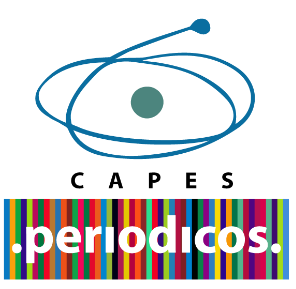Design fundamentals and guidelines and teaching-learning strategies for teaching materials aimed at children with ADHD
DOI:
https://doi.org/10.5433/2236-2207.2024.v15.n2.49575Keywords:
ADHD, teaching-learning, universal design for learning, information designAbstract
This article addresses the topic of education for children with ADHD and the contributions of Design in the development of teaching materials for this audience. This is an exploratory study, based on principles and guidelines of Universal Design for Learning, Information Design and teaching-learning strategies. Its main objective is to map contributions from the mentioned areas to informational graphic representation, in the context of teaching-learning for children with ADHD. Based on the theoretical foundations raised, the information was synthesized, structured into a matrix and compared. With this, it was possible to identify consonances and complementarities between the areas researched. The results obtained were organized in order to map contributions to graphic representation in the context of teaching-learning for children with ADHD.
Downloads
References
CAST. Universal Design for Learning Guidelines version 2.2. 2018. Disponível em: http://udlguidelines.cast.org. Acesso em: 20 jul. 2023.
DUARTE, Thayla B.; BORGES, Vanessa M.; PADOVANI, Rafael M. C.; ROCHA, Túlio C. C.; FERREIRA, Larissa T. V.; KALIL, José H. TDAH: atualização dos estudos que trazem diagnóstico e terapêutica baseado em evidências. Brazilian Journal of Surgery and Clinical Research, Cianorte, PR, v. 35, n. 2, p. 66-72, jun./ago. 2021.
DUPAUL, George J., STONER, Gary. TDAH nas escolas: estratégias de avaliação e intervenção. São Paulo: M. Books do Brasil, 2007.
FARAONE, Stephen V.; BANASCHEWSKI, Tobias; COGHILL, David; ZHENG, Yi; BIEDERMAN, Joseph; BELLGROVE, Mark A.; WANG, Yufeng. The World Federation of ADHD International Consensus Statement: 208 Evidence-based conclusions about the disorder. Neuroscience & Biobehavioral Reviews, Oxford, GB, v. 128, p. 789–818, 2021. DOI: 10.1016/j.neubiorev.2021.01.022. Disponível em: https://www.sciencedirect.com/science/article/pii/S014976342100049X?via%3Dihub. Acesso em: 20 jul. 2023. DOI: https://doi.org/10.1016/j.neubiorev.2021.01.022
FREIRE, Antonio Carlos Cruz; PONDÉ, Milena Pereira. Estudo piloto da prevalência de TDAH entre crianças escolares na cidade de Salvador, Bahia, Brasil. Arquivos de Neuro-Psiquiatria, São Paulo, SP, v. 63, n. 2, p. 474-478, 2005. Disponível em: https://www.scielo.br/j/anp/a/ZQz43jJ53ZrFbwHbNNMgB5K/?lang=pt. Acesso em: 20 jul. 2023. DOI: https://doi.org/10.1590/S0004-282X2005000300020
GARCIA, Denise Fiuzza; RÊGO, Gabriel Gaudencio do. As funções executivas em alunos com transtorno do TDAH na educação básica. Núcleo do Conhecimento, São Paulo, SP, ano 5, ed. 1, v. 10, p. 24-56, 2020. Disponível em: https://www.nucleodoconhecimento.com.br/educacao/funcoes-executivas. Acesso em: 21 jul. 2023. DOI: https://doi.org/10.32749/nucleodoconhecimento.com.br/educacao/funcoes-executivas
HAVEY, Michael J. A comparison of Dutch and US teachers’ perceptions of the incidence and management of ADHD. School Psychology International, London, v. 28, n. 1, p. 46-52, 2007. DOI: https://doi.org/10.1177/0143034307075679
HAVEY, Michael J.; OLSON, Julie M.; MCCORMICK, Christine; CATES, Gary L. Teachers’ perceptions of the incidence and management of attention-deficit hyperactivity disorder. Applied Neuropsychology, London, v. 12, n. 2, p. 120-127, 2007. DOI: https://doi.org/10.1207/s15324826an1202_7
HORN, Robert E. Information design: emergence of a new profession. In: JACOBSON, R. (org.). Information design. Massachusetts: The MIT Press, p. 15-33, 2000.
JACOBSON, Robert. Introduction: why information design matters. In: JACOBSON, Robert (org.). Information design. Massachusetts: The MIT Press, 2000. p. 1-10.
JOU, Graciela Inchausti de; AMARAL, Bruna; PAVAN, Carolina R.; SCHAEFER, Luiziana Souto; ZIMMER, Marilene. Transtorno de déficit de atenção e hiperatividade: um olhar no ensino fundamental. Psicologia: Reflexão e Crítica, Porto Alegre, RS, v. 23, p. 29-36, 2010. Disponível em: https://www.scielo.br/j/prc/a/Q4GXdJzTPvBdgwjwNZv8mrw/?lang=pt. Acesso em: 23 jul. 2023. DOI: https://doi.org/10.1590/S0102-79722010000100005
LACOSTA, Angel M. C. La resolución de problemas aritmético verbales por alumnos con Déficit de Atención con Hiperactvidade (TDAH). 2005. Tesis (Doctorat en Didàctica de Matemàtiques i Ciències Experimentals) - Universitat de Barcelona, Barcelona, 2005. Disponível em: https://www.tdx.cat/handle/10803/1311;jsessionid=82C79ABF6F59E49203B150709E743989#page=1. Acesso em: 15 jul. 2023.
LAWRENCE, Kay; ESTRADA, Robin Dawson; MCCORMICK, Jessica. Teachers' experiences with and perceptions of students with attention deficit/hyperactivity disorder. Journal of Pediatric Nursing, Philadelphia, Pa, v. 36, p. 141-148, Sep. /Oct. 2017. Disponível em: https://www.pediatricnursing.org/article/S0882-5963(16)30508-5/abstract. Acesso em: 15 jul. 2023. DOI: https://doi.org/10.1016/j.pedn.2017.06.010
LIPTON, Ronnie. The practical guide to information design. Hoboken, NJ: John Wiley & Sons, 2007.
MALAMED, Connie. Visual language for designers: principles for creating graphics people understand. Beverly, MA: Rockport, 2009.
MARIUSSI, Madalene Isabel; GISI, Maria Lourdes; EYNG, Ana Maria. A escola como espaço para efetivação dos direitos humanos das pessoas com deficiência. Revista Brasileira de Educação Especial, Marília, SP, v. 22, n. 3, p. 443-454, 2016. DOI: https://doi.org/10.1590/S1413-65382216000300010. Disponível em: https://www.scielo.br/j/rbee/a/sFXWwtHPshmPwhDbg4bZxtj/. Acesso em: 15 jul. 2023. DOI: https://doi.org/10.1590/S1413-65382216000300010
MAYES, Susan D.; CALHOUN, Susan L. Frequency of reading, math, and writing disabilities in children with clinical disorders. Learning and Individual Differences, Greenwich, Conn, v. 16, n. 2, p. 145-157, 2006. Disponível em: https://www.sciencedirect.com/science/article/abs/pii/S1041608005000415?via%3Dihub. Acesso em: 14 jul. 2023. DOI: https://doi.org/10.1016/j.lindif.2005.07.004
MAYES, Susan D.; CALHOUN, Susan L. Learning, attention, writing, and processing speed in typical children and children with ADHD, autism, anxiety, depression, and oppositional-defiant disorder. Child Neuropsychology, Lisse, NE, v. 13, n. 6, p. 469-93, 2007. DOI: 10.1080/09297040601112773. Disponível em: https://pubmed.ncbi.nlm.nih.gov/17852125/. Acesso em: 15 jul. 2023. DOI: https://doi.org/10.1080/09297040601112773
MAYES, Susan D.; CALHOUN, Susan L.; CROWELL, Errin W. Learning disabilities and ADHD: overlapping spectrum disorders. Journal of Learning Disabilities, Thousand Oaks, v. 33, n. 5, p. 417-424, 2000. DOI: https://doi.org/10.1177/002221940003300502 DOI: https://doi.org/10.1177/002221940003300502
ALBA-PASTOR, Carmen; SÁNCHEZ-SERRANO, José Manuel; DEL RÍO, Ainara Zubillaga. DUA: diseño universal para el aprendizaje. Documento adaptado a la versión 2018. Madrid: Edelvives, 2018. Disponível em: https://www.educadua.es/doc/dua/Si%CC%81ntesis-Pautas%20DUA-Adaptado-V-2018.pdf. Acesso em: 3 mar. 2022.
PETTERSSON, Rune. Information design: an introduction. Amsterdam: John Benjamins Publishing, 2002. DOI: https://doi.org/10.1075/ddcs.3
PETTERSSON, Rune. It depends: principles and guidelines. IIID Public Library. Tullinge: Institute for Infology, 2015. Disponível em: https://www.iiid.net/rune-pettersson-it-depends/. Acesso em: 20 abr. 2022.
POETA, Lisiane S.; ROSA NETO, Francisco. Estudo epidemiológico dos sintomas do transtorno do déficit de atenção/hiperatividade e transtornos de comportamento em escolares da rede pública de Florianópolis usando EDAH. Brazilian Journal of Psychiatry, São Paulo, SP, v. 26, n. 3, p. 150-155, 2004. Disponível em: https://www.scielo.br/j/rbp/a/NQ4qtTT9GzQpyBw5skfJkGv/?lang=pt. Acesso em: 15 jul. 2023. DOI: https://doi.org/10.1590/S1516-44462004000300004
RASMUSSEN, Fernanda de Souza; SILVA, Rosemeire da Costa; NEIX, Carine da Silva Vieira. O ensino e a atividade estruturada para a aprendizagem de pessoas com transtorno do espectro autista. Construção Psicopedagógica, São Paulo, v. 30, n. 31, jul./dez. 2021. DOI: http://dx.doi.org/10.37388/CP2021/v30n31a08 DOI: https://doi.org/10.37388/CP2021/v30n31a08
ROHDE, Luís Augusto. Transtorno de déficit de atenção hiperatividade: o que é? Como ajudar? Porto Alegre: Artes Médicas, 1999.
ROHDE, Luís Augusto; DORNELES, Beatriz Vargas; COSTA, Adriana Corrêa. Intervenções escolares no transtorno de déficit de atenção/hiperatividade. In: ROTTA, Newra T.; OHLWEILER, Lygia; RIESGO, Rudmar dos Santos (ed.). Transtornos de aprendizagem: abordagem neurobiológica e multidisciplinar. Porto Alegre: Artes Médicas, 2006. v. 2, p. 365-374.
ROSE, David; MEYER, Anne. Teaching every student in the digital age: universal design for learning. Alexandria, VA: Association for Supervision and Curriculum Development, 2002.
ROTTA, Newra T.; OHLWEILER, Lygia; RIESGO, Rudmar dos Santos (org.). Transtornos da aprendizagem: abordagem neurobiológica e multidisciplinar. Porto Alegre: Grupo A, 2016. E-book.
SEBASTIÁN-HEREDERO, Eladio. Diretrizes para o desenho universal para a aprendizagem (DUA). Revista Brasileira de Educação Especial, Bauru, SP, v. 4, n. 26, out. /dez. 2020. Disponível em: https://www.scielo.br/j/rbee/a/F5g6rWB3wTZwyBN4LpLgv5C/. Acesso em: 20 jul. 2023. DOI: https://doi.org/10.1590/1980-54702020v26e0155
SILVA, Ana Beatriz Barbosa. Mentes inquietas: TDAH, desatenção, hiperatividade e impulsividade. 4. ed. São Paulo: Globo, 2014.
SBDI-SOCIEDADE BRASILEIRA DE DESIGN DA INFORMAÇÃO. Definições. Brasil: SBDI, 2020. Disponível em: http://www.sbdi.org.br/definicoes. Acesso em: 4 fev. 2022.
ZENTALL, Sydney S. ADHD and education: foundations, characteristics, methods, and collaboration. Upper Saddle River: Pearson, 2006.
ZERBATO, Ana Paula; MENDES, Enicéia Gonçalves. O desenho universal para a aprendizagem na formação de professores: da investigação às práticas inclusivas. Educação e Pesquisa, São Paulo, SP, v. 47, e233730, 2021. Disponível em: https://www.scielo.br/j/ep/a/XrThMT5Hhn6D9CSqcn3HHSM/?lang=pt. Acesso em: 20 jul. 2023. DOI: https://doi.org/10.1590/s1678-4634202147233730
Downloads
Published
How to Cite
Issue
Section
License
Copyright (c) 2024 Fernanda Pozza da Costa, Ricardo Triska

This work is licensed under a Creative Commons Attribution 4.0 International License.
Projética está licenciada sob a Creative Commons Attribution CC-BY 4.0 International. Os autores detém os direitos autorais e concedem à revista o direito de exclusividade de primeira publicação.
Os autores dos trabalhos aprovados autorizam Projética a, após a publicação, ceder seu conteúdo para reprodução em indexadores de conteúdo, bibliotecas virtuais e similares.
Os autores assumem que os textos submetidos à publicação são de sua criação original, responsabilizando-se inteiramente por seu conteúdo em caso de eventual impugnação por parte de terceiros. As opiniões emitidas pelos autores dos artigos são de sua exclusiva responsabilidade.
A revista se reserva o direito de efetuar, nos originais, alterações de ordem normativa, ortográfica e gramatical, com vistas a manter o padrão culto da língua e a credibilidade do veículo. Respeitará, no entanto, o estilo de escrever dos autores. Alterações, correções ou sugestões de ordem conceitual serão encaminhadas aos autores, quando necessário. Nesses casos, os artigos, depois de adequados, deverão ser submetidos a nova apreciação. As provas finais não serão encaminhadas aos autores.











